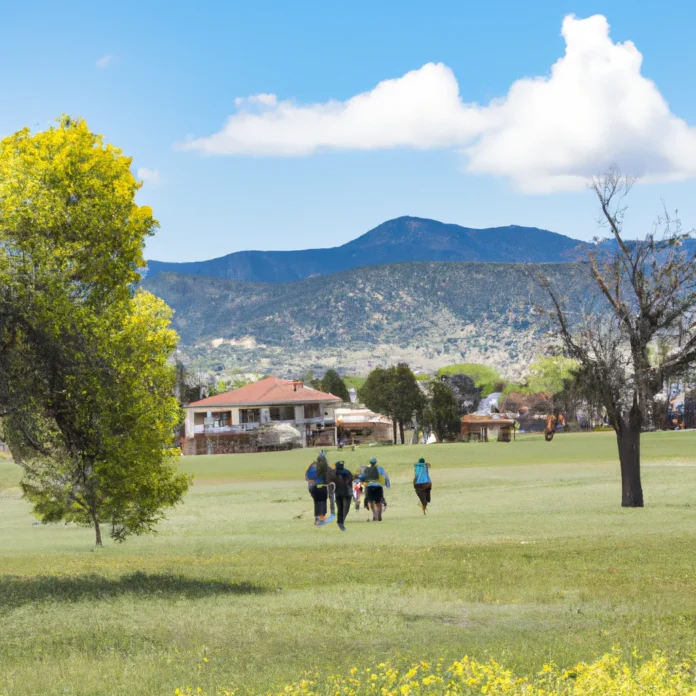Horseback riding is a timeless activity that combines the thrill of riding with the beauty of nature. It has a rich history and continues to be a popular pastime for people of all ages. In this comprehensive guide, we will explore various aspects of horseback riding, including its benefits, types of riding styles, safety measures, and how to get started.
The Benefits of Horseback Riding
Horseback riding offers a multitude of benefits, both physical and mental. Engaging with horses not only promotes physical health but also contributes to emotional well-being.
Physical Health Benefits
Riding a horse requires balance, coordination, and strength. As riders engage their core muscles to maintain stability, they inadvertently enhance their overall physical fitness. Regular riding can improve cardiovascular health, as it involves moderate physical activity. Additionally, grooming and caring for horses involves physical exertion, further contributing to fitness levels.
Mental Health Benefits
The bond between rider and horse can have profound effects on mental health. Interacting with horses has been shown to reduce stress and anxiety. The rhythmic motion of riding can be meditative, allowing riders to clear their minds and focus on the present moment. Moreover, the responsibility of caring for an animal fosters a sense of purpose and increases self-esteem.
Types of Horseback Riding Styles
There are several distinct styles of horseback riding, each with its own techniques, equipment, and disciplines. Understanding these styles can help riders choose the right method that suits their interests and goals.
English Riding
English riding is characterized by the use of a flat saddle and a variety of disciplines, including dressage, show jumping, and eventing. This style emphasizes communication between horse and rider, showcasing the horse’s agility and responsiveness. Riders often participate in competitions and shows, demonstrating their skills in various events.
Western Riding
Western riding originated from the working practices of cowboys in North America. It features a more relaxed posture and the use of a larger saddle. Disciplines such as reining, barrel racing, and cutting are popular in Western riding. This style often emphasizes the practical use of horses in ranch work and leisure activities.
Trail Riding
Trail riding is a popular recreational activity that involves riding horses along designated trails in natural settings. This style allows riders to enjoy the outdoors while fostering a connection with their horse. Trail rides can vary in length and difficulty, accommodating both beginners and experienced riders.
Getting Started with Horseback Riding
For those looking to begin horseback riding, it is essential to approach the activity with the right knowledge and preparation. Here are some key steps to consider.
Finding a Riding School
One of the first steps in starting to ride is finding a reputable riding school or instructor. Look for establishments that have certified trainers and well-cared-for horses. Visiting the facility and observing a lesson can provide insight into their methods and atmosphere.
Choosing the Right Horse
Selecting a horse that matches your experience level is crucial. Beginner riders should opt for calm, well-trained horses that are accustomed to new riders. Instructors can assist in finding the right match based on individual skills and comfort levels.
Essential Riding Gear
Proper riding gear is vital for safety and comfort. Key items include:
- Helmet: A certified riding helmet is essential to protect against head injuries.
- Boots: Sturdy, heeled boots help prevent the foot from slipping through the stirrup.
- Pants: Comfortable riding pants or breeches allow for ease of movement.
- Gloves: Riding gloves can enhance grip and protect hands from friction.
Safety Measures in Horseback Riding
Safety is a paramount concern when participating in horseback riding. Following specific guidelines can significantly reduce the risk of accidents.
Understanding Horse Behavior
Horses are prey animals with strong instincts. Understanding their behavior is crucial for ensuring both the rider’s and horse’s safety. Learning to recognize signs of discomfort or agitation can help prevent dangerous situations.
Riding Lessons and Practice
Taking professional riding lessons is highly recommended for beginners. Structured lessons provide foundational skills and knowledge about horse care, riding techniques, and safety protocols. Consistent practice is also essential to build confidence and competence.
Riding with a Partner
Whenever possible, riding with a partner or in a group is advisable. This not only enhances safety but also allows for shared experiences and support. In case of an emergency, having another person present can be invaluable.
Horseback Riding Events and Competitions
Many riders enjoy participating in events and competitions that showcase their skills and the abilities of their horses. These events can range from local shows to national competitions.
Local Horse Shows
Local horse shows are an excellent way for riders to gain experience in a competitive setting. These events often feature various classes, allowing riders to compete in different disciplines. Participating in local shows can build confidence and provide valuable feedback from judges.
National Championships
For more advanced riders, national championships offer the opportunity to compete at higher levels. These events attract skilled riders from across the country and provide a platform to showcase training and talent. Competing at this level requires dedication and rigorous preparation.
Horseback Riding Destinations
There are numerous breathtaking destinations around the world that cater to horseback riding enthusiasts. Each location offers unique experiences and landscapes.
National Parks
Many national parks provide trails specifically designed for horseback riding. These parks often feature stunning scenery and diverse wildlife, creating an unforgettable riding experience. Riders can enjoy the beauty of nature while exploring expansive trails.
Riding Vacations
Riding vacations allow enthusiasts to travel to scenic locations while enjoying horseback riding. These trips often include guided tours, accommodations, and meals. Riders can experience different terrains and cultures while riding in new environments.
Conclusion
Horseback riding is a multifaceted activity that offers numerous benefits, challenges, and experiences. Whether one is looking to engage in a leisurely trail ride or compete at a national level, the world of horseback riding welcomes all. For those considering a unique experience, we highly recommend exploring the opportunities offered by Puerto Rico Tour. This experience not only allows for horseback riding but also includes the beauty and culture of Puerto Rico.




















